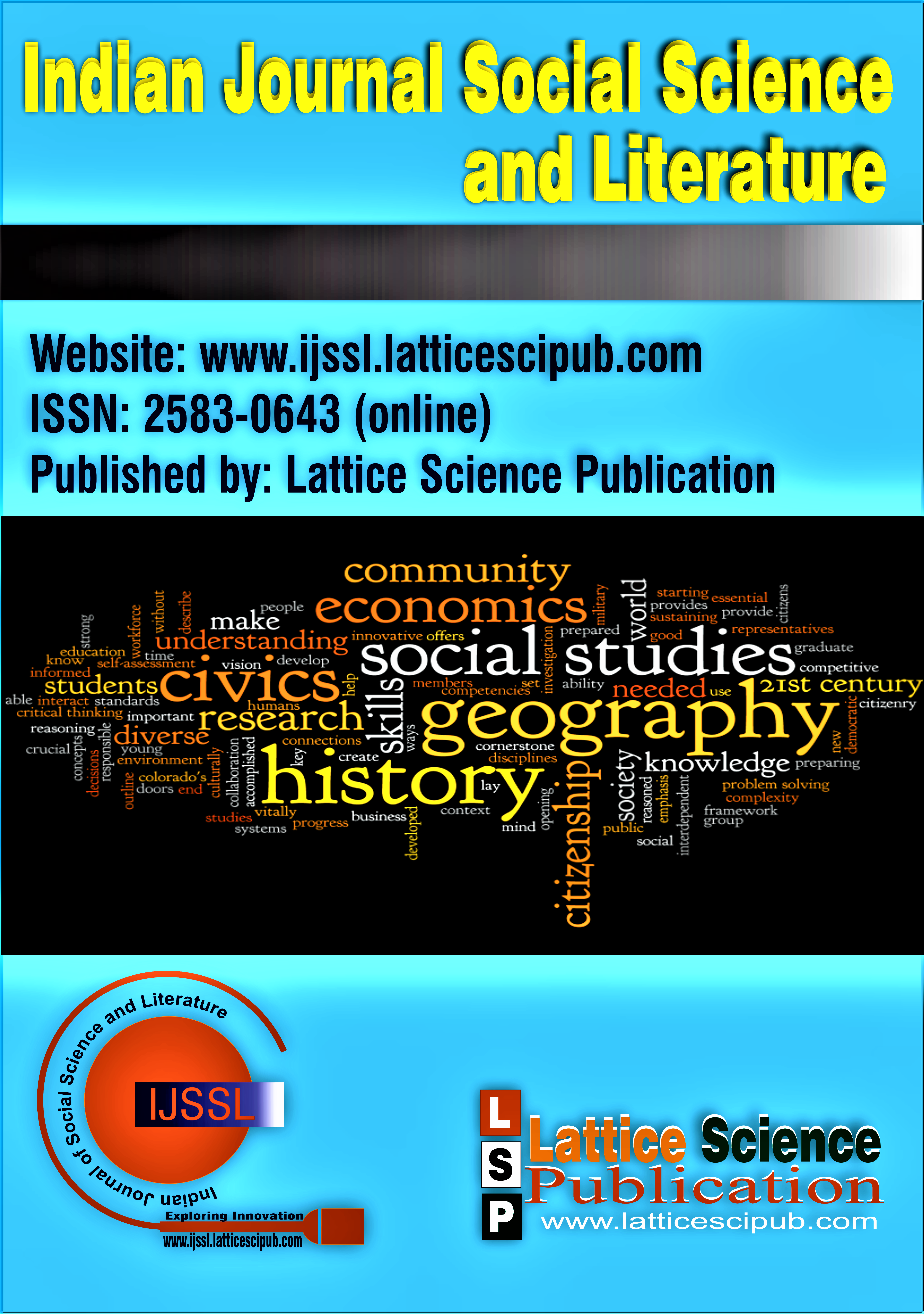Echoes of Ancestry in the Age of AI: Safeguarding Tribal Land Rights Amid a Digital Revolution
Main Article Content
Abstract
As Artificial Intelligence (AI) rapidly transforms governance systems worldwide, its impact on tribal land rights in India brings both hope and concern. This paper delves into the unique challenges and opportunities AI presents for tribal communities, who have historically fought to protect their ancestral lands. AI technologies, like advanced land mapping and automated records management, promise to make land governance more efficient and transparent. Yet, these advancements come with risks, such as data privacy issues, potential cultural erosion, and the fear of repeating past injustices. By exploring India’s legal protections, including the Constitution [1], the Forest Rights Act (FRA) [19], and the Panchayats (Extension to Scheduled Areas) Act (PESA) [20], this paper emphasises the importance of respecting tribal autonomy and cultural heritage. Real-world examples, such as AI’s use in the Digital India Land Records Modernisation Programme, shed light on the balance needed between progress and preservation [7]. Grounded in insights from thinkers like Amartya Sen and Michel Foucault [15], the discussion calls for an approach where AI empowers rather than marginalises, highlighting the need for ethical safeguards, meaningful community involvement, and ongoing oversight. Ultimately, the goal is to ensure that AI becomes a tool for upliftment, enriching tribal communities without compromising their rich cultural identities.
Downloads
Article Details

This work is licensed under a Creative Commons Attribution-NonCommercial-NoDerivatives 4.0 International License.
How to Cite
References
Constitution of India, Articles 244 and 275. (1949). India Code. Retrieved from https://indiacode.nic.in/
Scheduled Tribes of India and their constitutional safeguards. (2020). IOSR Journal of Humanities and Social Science, 25(12), 5–8. Doi: https://doi.org/10.9790/0837-2512100508
Banik, N. (2022). Assessing the compliance of the Local Self-Governance Act for PESA in India. Journal of Rural Development, 41(3), 345–360. Doi: https://doi.org/10.25175/jrd/2022/v41/i3/173020
Jha, N. K., & Sharma, R. (2019). Land governance in Fifth Schedule Areas: A critical analysis of FRA and PESA implementation. Journal of Land and Rural Studies, 9(1), 23–38. Doi: https://doi.org/10.1177/23210249211051438
Parameswaran, R. (2015). Judicial protection of tribal land rights in India: An analysis of Samatha judgment. Indian Law Review, 3(1), 35–57. Doi: https://doi.org/10.1080/24730580.2015.1111530
Agarwal, S. (2014). Compensation under the LARR Act: Issues and analysis. Land Use Policy, 42, 20–28. Doi: https://doi.org/10.1016/j.landusepol.2014.06.012
Sen, A. (1999). Development as freedom. Oxford University Press. Doi: https://doi.org/10.1093/0198297580.001.0001
Said, E. W. (1978). Orientalism. Pantheon Books. Doi: https://doi.org/10.4324/9780203820563
Rousseau, J.-J. (1762). The social contract. Doi: https://doi.org/10.1093/oseo/instance.00066178
Foucault, M. (1975). Discipline and punish: The birth of the prison. Gallimard. Doi: https://doi.org/10.1086/ahr/83.2.546
Scott, J. C. (1985). Weapons of the weak: Everyday forms of peasant resistance. Yale University Press. Doi: https://doi.org/10.2307/2802221
Arendt, H. (1958). The human condition. University of Chicago Press. Doi: https://doi.org/10.7208/chicago/9780226586745.001.000
Harvey, D. (2005). A brief history of neoliberalism. Oxford University Press. Doi: https://doi.org/10.1093/oso/9780199283262.001.0001
Fanon, F. (1961). The wretched of the earth. Grove Press. Doi: https://doi.org/10.1002/9780470755167.ch12
Rajagopal, B. (2014). Environmental law and indigenous rights in India. International Environmental Law Review, 21(2), 98–112. Doi: https://doi.org/10.1093/iel/987
Anaya, J. (2013). Indigenous peoples in international law. American Society of International Law, 107(2), 412–420. Doi: https://doi.org/10.5301/anj-2013-1072
Russell, S., & Norvig, P. (2018). AI policy frameworks: Indian strategy in focus. Artificial Intelligence Review, 52(5), 723–745. Doi: https://doi.org/10.1007/s10462-018-9624
Department of Land Resources. (n.d.). Digital India Land Records Modernisation Programme (DILRMP). Ministry of Rural Development, Government of India. Retrieved from https://dolr.gov.in/programmes-schemes/dilrmp-2/
Forest Rights Act, 2006 (FRA). (2006). India Code. Retrieved from https://indiacode.nic.in/
Panchayats (Extension to Scheduled Areas) Act, 1996 (PESA). (1996). India Code. Retrieved from https://indiacode.nic.in/
Yavana Rani. S, Muthu Kumar. N, Geetha. V, Measurement Model of Visitors’ Intention to Visit Cultural Heritage Site. (2019). In International Journal of Innovative Technology and Exploring Engineering (Vol. 8, Issue 12S2, pp. 153–159). Doi: https://doi.org/10.35940/ijitee.l1028.10812s219
Chang-Seek Lee, Ha-Young Jang, The Effects of the Local Culture Status and an Individual Cultural Capacity on Cultural Participation: Moderated Mediation Effect of Growth Mindset. (2019). In International Journal of Recent Technology and Engineering (Vol. 8, Issue 2S6, pp. 285–289). Doi: https://doi.org/10.35940/ijrte.b1054.0782s619
Alehegn, D. S., Dr. R. Karunakara, & Engeda, B. (2024). Community Advancement in Community Policing Within the Addis Ababa City Organization. In International Journal of Management and Humanities (Vol. 10, Issue 10, pp. 15–21). Doi: https://doi.org/10.35940/ijmh.i1710.10100624
Muhammad Roy Purwanto, Supriadi,
Rahmani TimoritaYulianti, The Use
of Entrepreneurship Education in Community Empowerment at Lintangsongo Islamic Boarding School of Yogyakarta. (2019). In International Journal of Engineering and Advanced Technology (Vol. 9, Issue 2, pp. 796–800). Doi: https://doi.org/10.35940/ijeat.b3740.129219
Reginio, R. R., Madriño, L. B., & Robles, J. R. (2024). Development and Evaluation of Community Affairs Management Information System for Municipality of Torrijos. In International Journal of Soft Computing and Engineering (Vol. 14, Issue 2, pp. 12–16). Doi: https://doi.org/10.35940/ijsce.f8011.14020524





